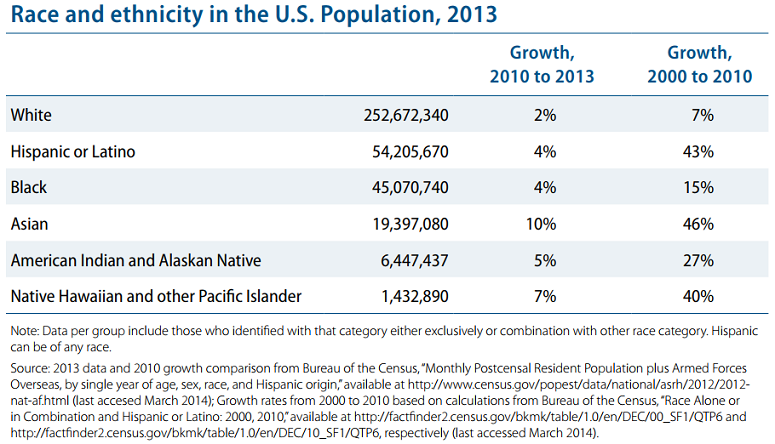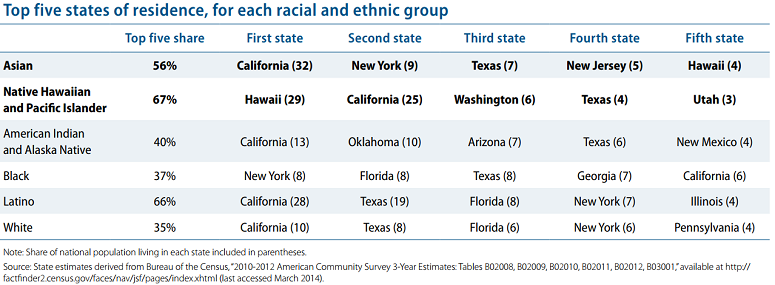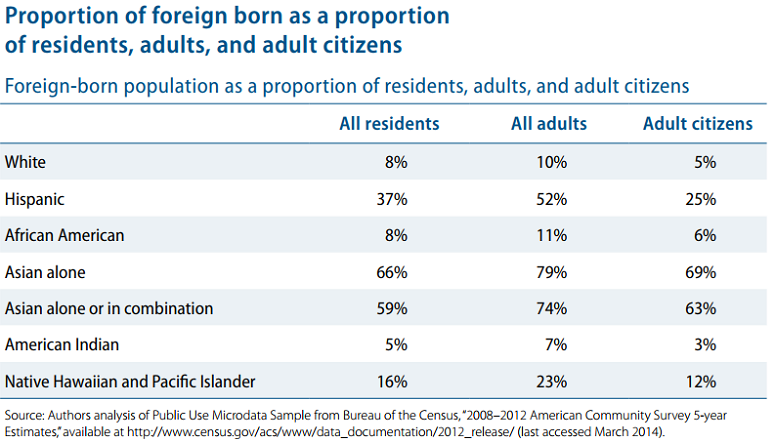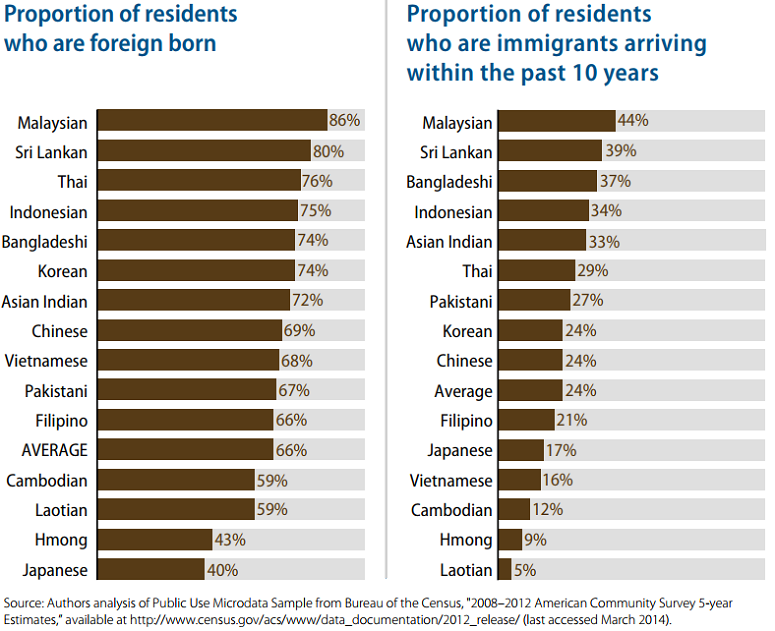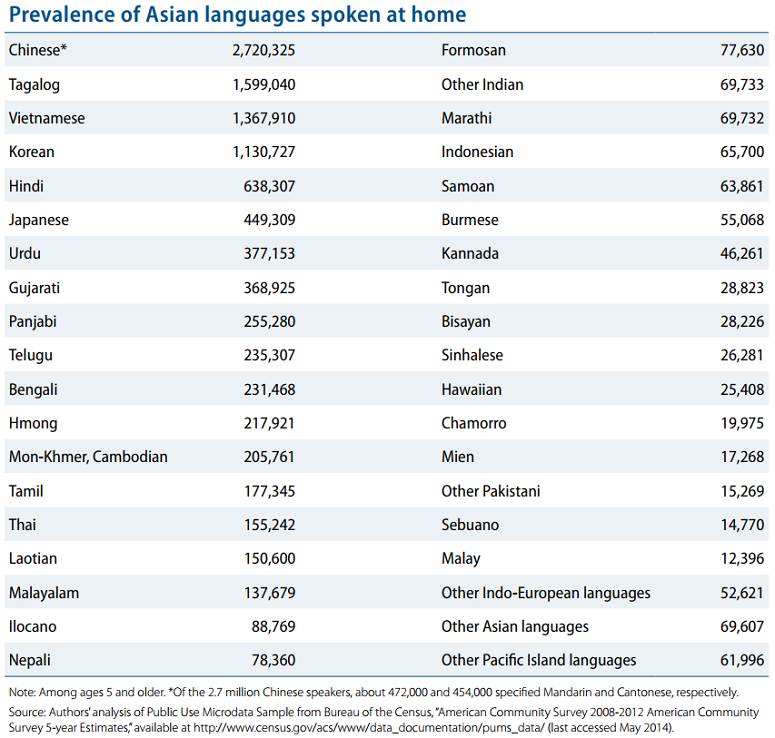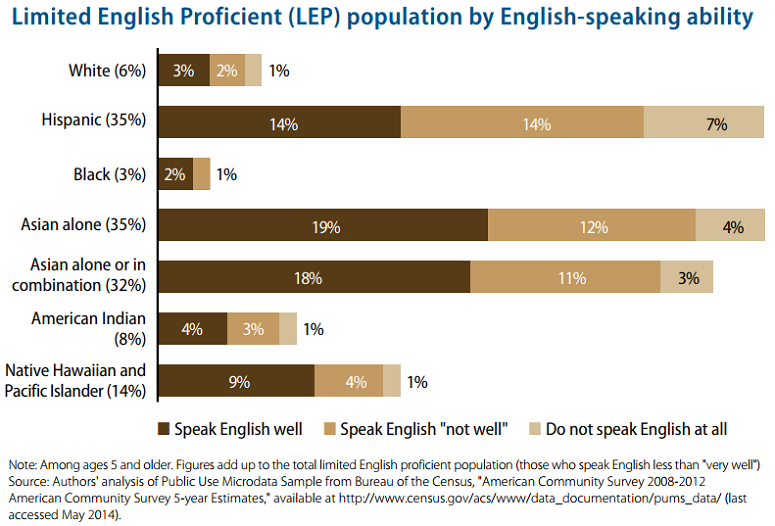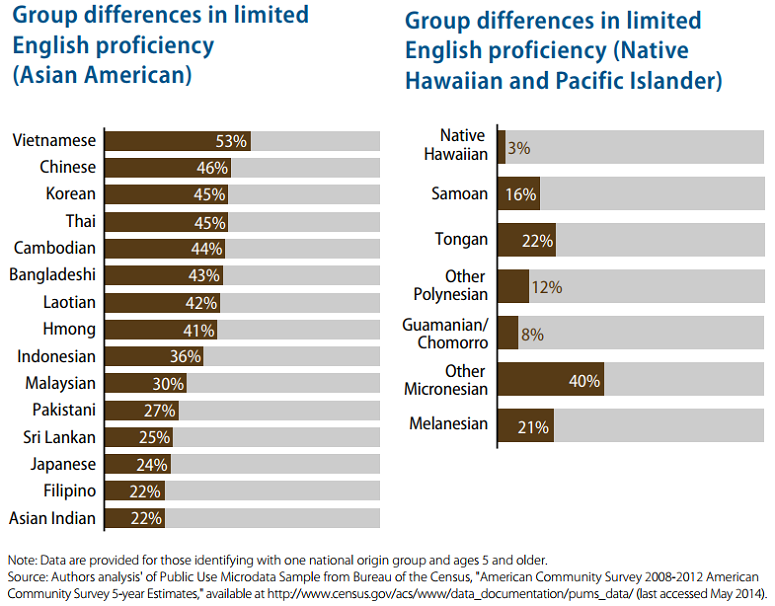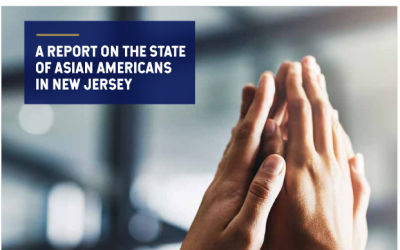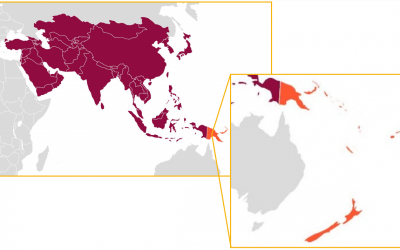Definitions
In the 2000 U.S. Census, the Federal Government defines “Asian American” to include persons having origins in any of the original peoples of the Far East, Southeast Asia, or the Indian subcontinent. “Native Hawaiian and Other Pacific Islander” includes Native Hawaiian, Samoan, Guamanian or Chamorro, Fijian, Tongan, or Marshallese peoples and encompasses the people within the United States jurisdictions of Melanesia, Micronesia and Polynesia. The previous “Asian and Pacific Islander” (API) category was separated into “Asian Americans” and “Native Hawaiians and Other Pacific Islanders” (NHOPI).
Historically, Asians and Pacific Islanders were grouped together by government classifications and by us, as part of an intentional community-based strategy to build coalitions with one another. There are conflicting views on the appropriateness of any aggregate classification or reference – “Asian Pacific American”, “Asian American and Pacific Islander”, etc; and a lot of significance can get attached to them, e.g., the word “Other” in “Native Hawaiian and Other Pacific Islander” (NHOPI), and it is at times dropped in favor of “Native Hawaiian and Pacific Islander”. Whilst our communities use various names to describe themselves; these groupings are ultimately political and part of a dynamic, continuing process of self-determination and self-identification.
We use the term “Asian and Pacific Islander” to include all people of Asian, Asian American or Pacific Islander ancestry who trace their origins to the countries, states, jurisdictions and/or the diasporic communities of these geographic regions.
Identities
Identities overlap and occur simultaneously, not discretely or serially and because identities are experienced in many ways; one’s power does not rest on a single axis (or category) of identity. Within each category that defines identity, there are several sub-categories; both are enumerated below:
- Ethnicity: single race, bi- or multi-racial;
- Demographics: gender/sex, age, disability, sexual orientation, languages spoken, religion, marital status;
- Geographic location: rural, urban, suburban, military bases, poor neighborhoods;
- Family history: nuclear, extended, blended, or single parent family, adopted or biological child, only child, sibling order, living with foster parents in foster homes;
- Social location and history: type of labor performed, level of education, class position and mobility, immigration or refugee status, employment status;
- Political history: be it shaped by colonialism, imperialism, civil or international wars, racial segregation, dictatorships, capitalism, socialism; and
- Practices: food, music, holidays, styles of dress, celebrations.
Asian Countries
There is no official definition of the boundary between Asia and Europe (nor between continents for that matter) so the boundaries are merely traditional – and some of the countries listed as Asian might not seem obvious. For example, Armenia, Azerbaijan and Georgia lie south of the Caucasus Mountains which have traditionally divided the two continents. Turkey and Russia straddle both Europe and Asia (sometimes referred to as Eurasia); 80% of the latter is in Asia, but Russians are generally considered Europeans; in the former, east of Istanbul is customarily considered in Asia. These examples illustrate why a single factor cannot be used to describe ethnic identity or origin.
National Geographic lists the following countries in Asia: Afghanistan, Armenia, Azerbaijan, Bahrain, Bangladesh, Bhutan, Cambodia, China, Georgia, India, Indonesia, Iran, Iraq, Israel, Japan, Jordan, Kazakhstan, Kuwait, Kyrgyzstan, Laos, Lebanon, Malaysia, Maldives, Mongolia, Myanmar (Burma), Nepal, North Korea, Oman, Pakistan, Philippines, Qatar, Russia (parts in Europe and Asia), Saudi Arabia, Singapore, South Korea, Sri Lanka, Syria, Tajikistan, Thailand, Timor-Leste (East Timor), Turkey (parts in Europe and Asia), Turkmenistan, United Arab Emirates (UAE), Uzbekistan, Vietnam, and Yemen.
API Ethnicities and Regional Groupings
Ethnic identities can be referenced in the aggregate e.g., Southeast Asians or disaggregated e.g., Cambodians. Asians and Pacific Islanders are generally grouped by regions although some of these can be politically controversial. There is tremendous diversity, with Asia having more than 40 countries, and there are more ethnicities than countries, e.g., the Hmong are an ethnic group from Laos. Also, Asian diasporas are extremely large and ethnic identity oversimplifications do not apply. For example, people of Japanese origin in Brazil culturally identify as Brazilians, those of Chinese origin in Guatemala identify as Guatemalans; whereas hyphenated identities are more common in the U.S. as evidenced by terms like Asian American, or Korean American.
Notions of ethnic and national identity carry political, social and familial meanings too complex to analyze here.
- Central Asians Afghan, Armenian, Azerbaijani, Georgians, Kazakh, Kyrgyz, Mongolian, Tajik, Turkmen, Uzbek.
- East Asians Chinese, Japanese, Korean, Okinawan, Taiwanese, Tibetan.
- Native Hawaiians and Pacific Islanders (in the U.S. Jurisdictions & Territories) Carolinian, Chamorro, Chuukese, Fijian, Guamanian, Hawaiian, Kosraean, Marshallesse, Native Hawaiian, Niuean, Palauan, Pohnpeian, Papua New Guinean, Samoan, Tokelauan, Tongan, Yapese.
- Southeast Asians Bruneian, Burmese, Cambodian, Filipino, Hmong, Indonesian, Laotian, Malaysian, Mien, Singaporean, Timorese, Thai, Vietnamese
- South Asians Bangladeshi, Bhutanese, Indian, Maldivians, Nepali, Pakistani, Sri Lankan.
- West Asians This is a contested term, most people from the region do not self-identify as such. West Asia is typically referred to as the Middle East; and geographically includes the countries of Bahrain, Iran, Iraq, Israel, Jordan, Kuwait, Lebanon, Oman, Palestine, Qatar, Saudi Arabia, Syria, Turkey (straddles Europe and Asia) United Arab Emirates and Yemen.
Census Data
POPULATION
Numbering only 6.9 million in 1990, there are over 19.4 million Asian Americans living in the United States as of 2013.
GEOGRAPHY
States with highest number of Asian Americans include California, New York, Texas, New Jersey, and Hawai’i.
States with the highest number of Native Hawaiians and Pacific Islanders include Hawaii, California, Washington, Texas, and Utah. Hawai’i and California alone account for over half of the NHPI population in the U.S.
The Asian American population grew the fastest in Nevada, Arizona, North Dakota, North Carolina, and Georgia. In these states, the Asian American population has more than doubled between 2002 and 2012. The Asian American population grew the slowest in the large states where the Asian American population had already been large.
Asian American Ethnic Groups
From 2000 to 2012, the country’s fastest growing Asian American ethnic group is Indian, with a growth rate of 76%.
Refugees and Asylees
- At 62%, those from Asian countries made up the largest group of all refugee arrivals to the U.S.
- At 44%, those from Asian countries made up the largest group of all persons granted asylum in the U.S., whether affirmatively or defensively.
- At 26%, the largest group of refugees to the U.S. was from Burma.
- At 24%, the largest group of those granted asylum, whether affirmatively or defensively, was from China.
Over 40% of Cambodian, Bangladeshi, Laotian, and Hmong Americans are LEP.
2020 Census Information Sheet: How Survivors Can Safely Participate and Implications for AANHPI Survivors and Communities
Q&A Factsheet on why participation in the census is important, and how survivors of domestic violence, including AANHPI survivors, can participate while maintaining safety and confidentiality.
A Report on the State of Asian Americans in New Jersey
Published by Jersey Promise
At over 10% of the state population, Asian Americans are the fastest growing racial group in New Jersey. This report tells the story of this diverse, heterogeneous community through an in-depth analysis of Family and Social Issues, Public Education, Economic Opportunity, Health Care, Immigration and Justice, and Civic Participation.
Asian and Pacific Islander Identities and Diversity
Brief demographic and identity information on Asian and Pacific Islander communities in the US, including origins, population data and English speaking ability
Domestic Violence and Sexual Assault in the Pacific Islander Community, 2017
Erin Thomas, Asian/Pacific Islander Domestic Violence Resource Project (DVRP)
An overview of the geographical, historical, ethno-linguistic, and cultural diversity of Pacific Islander communities; historical trauma; and GBV trends.
